April 2017, at the LifeSpace Science Art Research Gallery of the School of Life Sciences at the University of Dundee, the artworks created during the FEAT project were exhibited for the first time. FEAT stands for ‘Future Emerging Art and Technology’. It was an EU funded project during which artists were in residence over 9 months in FET/Future Emerging Technology consortia, FET being one of the cutting-edge scientific research programmes of the European Union. A lot has been writen about the art-science relation in this project, how the presence of artists in research labs could provide a new perspective to the research being conducted; a lot has been writen about the sciences that those works are incorporating. Here, I would like to focus on their aesthetics, on their relations to different approaches and trends in contemporary art, hopefully on how they will be seen, perceived and read once they are no longer exhibited together and that the context of their creation (the art-science FEAT project) will have been relegated to the background if not forgotten. I wrote those texts for the online enriched video capsules documenting each work on the Leonardo/Olats website as part of the FEAT project.
All the descriptions of the artworks come from the Dundee exhibition except Ion Hole by Domnitch & Gelfand which I had seen a few months earlier at Le Lieu Unique in Nantes where it was premiered.
Matter Between Wonder and Seduction
Evelina Domnitch & Dmitry Gelfand, Ion Hole
In a dark room, suspended in mid-air, as if floating in weightlessness, is a circle of pulsating, colourful light particles that look like the grande finale of a firework or the burst of a star from a distant galaxy (but isn’t it the same?).
The projection is coming from a nearby box which hosts an even more fabulous and mesmerizing dispositif: a device, that we learn later is a Paul trap, looking like a jewel designed for an unknown alien creature, is maintaining in its ring tiny particules that are sparkling and vibrating like rare precious stonepowder in an explosion of joy and vitality
In between magic, fairy tale, cosmic dimension and fundamental physics, it is seing the infinitely small, the universe contained in nothingness.
Ion Hole is a highly seductive light installation which is not based on understanding but on wonder. In this respect, it relates to an art-science approach and philosophy defined and promoted by The Exploratorium in San Francisco: attracting people to science through direct experiment and wonder. The hence triggered curiosity will lead then to research, to a quest for understanding; the artworks being « experiments among experiments ».
How to make quantum physics « approachable » when the minute you pronounce the term the flag « too-difficult-for-me » raises? How to make « concrete » something which is considered intensely « abstract »?
With Ion Hole, the answer of Evelina Domnitch and Dmitry Gelfand is by building upon the paradox. When quantum physics deals with matter but at an (almost) unperceptible level, the artwork shows totally observable phenomena but in a work that is (almost) objectless. Ion Hole, like many of the other artworks created by the duo, plays with this dialectic between tangibility and objectless, between cognition and emotion.
Nowadays, art being « scientific illustration » is dismissed. Although we praise it when it comes from the past, it has almost become an insult for contemporary creation in favour of a « critical approach » to science. Beyond the fact that this puts aside the whole blossoming field of visualisation and sonification and consider « science » as an undistinct global whole, I argue that this is a misunderstanding of what « illustration » really means. « Illustration » does not equal slick « image » or « drawing » or « charts ». It is the action to put in relation something with something in a sensitive order that is then presented as a realisation in another form, it is the realisation in the sensitive order of something*. In other words, it is bringing something to the perception, to the senses. And this is exactly what Ion Hole does.
Ion Hole is an artwork as scientific illustration at its best. It is a scientific experiment that has ceased to be one by the very act of having been brought out of the lab. By having no other goal but proposing itself to a direct observation/perception as opposed to (digital) measures and processes Ion Hole is a scientific experiment that has become an art experience.
* Translated from the definition of the Trésor de la langue française which also says that « illustrating » used to mean in past centuries « making famous ».
The Reason of Emotions in Non-living Entities
boredomresearch (Vicky Isley & Paul Smith), Robots In Distress
Endlessly, an underwater landscape unfolds on the screen in front of our eyes. Here and there, some metallic poles appear, remains from unknown constructions. Plastic bags and nets are litting the water floor, more and more of them. There is no life. Not a single fish, or shell or aquatic plant. Instead a noria of tiny robots, looking like alien insects that would have been hybridised with an earthian plastic bottle, are stubbornly lifting up and hopelessly falling back down. Upon rising, they emit a blinking red light contrasting with the blueish-grey color of the background environment. The whole scenary is bathed in a sepulchral sound.
Robots In Distress is an Artificial Life (or A.Life) computer-simulated world. When A.Life art emerged around the late 1980’s-early1990’s with artworks such as Karl Sims’s Panspermia (1990) or Christa Sommerer & Laurent Mignonneau Interactive Plant Growing (1992) or A-Volve (1994-95), they were, somehow, celebrating life, even if virtual or unknown ones. They were colorfull and playfull.
Thirty years later Robots In Distress expresses a strong rupture: from exploring emergent behaviours and forms of life of the early days, its focus now is on the disappearing of life, the human impact on nature and the failure of our techno-solutions. The artificial creatures (virtual robots) are less interesting by and for themselves than in so far as they reflect upon our responsability in the disappearance of real creatures, their despondency mirroring our own in elaborating answers.
Human beings have this capacity to develop empathy, even towards things, toward non-living entities, specially if those things have a some kind of motion, and even more if this motion seems to have a goal or intention. We project very easily our own intentions not only on our fellow humans but on objects as well.
In his 1994 book Descartes’ Error: Emotion, Reason, and the Human Brain, neurologist Antonio Damasio has shown that without emotions human beings are unable to perform correctly in the world, to have a ‘rational’ behaviour. Should the robots that we build have emotions then, including negative ones, to be more effective, to help us in implementing solutions? The question is left open.
What is for sure is that there is a strong feeling of melancholia in Robots In Distress, of having let the disaster to occur and left it to the robots to do the repairing. But, by their motion and behaviour, they too, show what we interpret as helplessness and hopelessness. And this is this very projection of our human emotions that (may) gives us the strength and the energy to react and take over, perhaps together with a swarm of strongly emotional depressed robots.
Finding Meaning Where There Is None …
Špela Petrič and Miha Turšič, Becoming a.(Thing)
‘Exascale supercomputing': the word in itself is in-between utterly mysterious and slightly frightening, intimidating for sure. So is the title of the artwork Becoming a.(Thing) by Špela Petrič and Miha Turšič.
Humanity landed itself on the Moon with less computer power than in the processor of our washing machines and now we find ourselves with those massive parallel computers crunching info and data like soap bubbles but needing a whole power plant to power them and a glacier to cool them. Which sense does it make?
Supercomputing is running after a fantasy which is building a computer that could be equivalent to a human brain. Of course, the result would not be an artificial human because humans have carbon-based biological bodies and think also with/through them. Which sense does it make?
How do you create art with/about supercomputer and supercomputing? For sure the machines are gorgeous and make fabulous pictures but they are not truly directly ‘useable’ in/for an art project. Petrič and Turšič’s answer presents itself as an audiovisual performative installation.
When entering the room we see a whole set of technical equipment ranging from computers, screens of all size, large video projections, microphones, cameras, some are more exotic ones such as a microscope and here and there some props like books or an ultrasound scanner. A dense mesh of cables is connecting the whole. The installation is displaying images, videos, charts, texts, lines of codes on some computer screens, a typical computer voice, etc. In short, it is something that looks familiar to a media art audience.
Slowly, as we move around, we get fascinated and captivated. The display has this seductive flavor of complex technology. However, this does not look like entertainment but serious and meaningful, both in terms of art and science. There is something to be understood.
Becoming a.(Thing) is based on the ground function of computers that is processing data. But, instead of providing the algorithms with the data they are meant to interpret, any data becomes an input to any algorithm, the output of which becomes a new input for another algorithm. Which sense does it make?
Making sense is precisely what is at the core of supercomputing and of Becoming a.(Thing), « Making sense in the (human) Animal and the Machine » to paraphrase a famous founding book of cybernetics [1].
By focusing on exhibiting processes and playing on/with absurdity, Becoming a.(Thing) puts in the forefront how we are becoming unable to understand how supercomputers are making sense of the (big) data we are feeding them with and therefore how we are loosing or might be losing our capacity to discriminate potentially wrong results and interpretations ; how, no matter what, computers are making reasonable sense from any information ; and how, anyhow we do make sense of anything. The nice thing is that even if you don’t look closer, if you don’t understand what is exactly going on in Becoming a.(Thing), it is still « working » because as an audience you will project some sense or meaning onto it.
The artists are indeed adding a layer of translation and interpretation in this meaning-making process as, in a metatheatrical way, the whole work is showing the process of semiosis itself emerging from the dance between humans and their invented non-carbon based embodied languages.
Becoming a.(Thing) is a pure exhilarating pataphysical object and finding meaning where there is none is, actually, a non-sensical meaningful process. Does it make sense? Yes.
Storytelling in Art and Science
Anna Dumitriu, Make Do and Mend
Central to Make Do and Mend, when one encounters it for the first time, is the patched suit on the mannequin followed by the toy sewing machine on its pedestal. The four framed pieces, on the wall, appear as some kind of background information, as secondary items, before revealing their content and role at a closer look.
Make Do and Mend is not a self explanatory artwork and is almost as complex to explain as the science it is using and reflecting upon. Non self explanatory artworks are common in art-science projects as well as in average (non art-science) contemporary art, but there are different ways of being so.
Make Do and Mend can be described as what I call ‘intermediary-objects’, carrying stories to be told and unfolded. It does not « stand for ». It is actual objects embodying the story lines. In other words, Make Do and Mend is a narrative spread between different artefacts.
It would be easy and a mistake to focus only on the 1941 suit, patched with the silk fabrics onto which the E. coli bacteria, repaired using the so called « molecular scissors » CRISPR/Cas9, were grown.
All the elements, echoing and mirroring each other, are equally important. In this respect, the four frames are like ‘antique tablets’ that are providing clues to decipher the work, which not only includes cutting-edge biomedical research but is also rooted in local history both from the Second World War in the UK and, more generally, in the history of Western science and is based on strong cultural references. The audience become like archaeologists ‘reading’ the history through remaining fragments that would have been over written.
Anna Dumitriu is using craft techniques, often connoted as feminine, in her artworks while working with the latest biotechnologies to address crucial contemporary issues. In Make Do and Mend, the « low-craft » aesthetics of the antique vintage elements not only refer to WWII and year 1941 but also confronts and opposes our vision of the clean-sterile-high-end lab aesthetics and the very notion of progress.
Each technique acts as a metaphor to the other to deploy the embodied enmeshed stories. In this respect, the homologous recombination technique can be compared to patching and the whole process of gene editing to craft with its meticulous steps and endless pipetting and ‘cooking’ procedures. Moreover, the clichés of ‘male-science’ and ‘female-craft’ are put upside down: science is craft.
The mending metaphor is even more powerful and the sewing machine the real key element of the piece for bringing to the forefront the ethical issues that the work carries: it is a toy which is the exact replica of the real machine. Are we like kids playing with matches when thinking of ‘repairing’ faulty genomes or our own past medical and scientific mistakes?
In the late ’90’s, when bioart emerged, one of its key elements was that the Living itself had become a medium for art, a living that had to remain alive, at least throughout the exhibition time. Formerly, many of those artworks had a ‘lab-aesthetics’ as they needed to maintain the living element alive, for instance in bio-reactors, and one of the struggles was precisely to bypass this drawback. One good example to have been successful in this respect is Eduardo Kac’s Genesis where the modified bacteria were alive but part of a larger (media) art installation.
Increasingly, due to health and safety regulations, to other kind of constraints (nobody would like the pathogenic bacteria that are in many of Anna Dumitriu’s projects to continue growing), to the expansion of speculative bioart, or to aesthetical choices, an important segment of bioart is finding its way into traditional art mediums and sometimes even out of the living matter itself. Make Do and Mend, as many of the artist’s other works, belongs to a bioart trend that I would term « non-living bioart » in that it includes ‘for real’ bio elements such as modified bacteria, but killed. The fact that it is genuine, both in its biotechnology techniques and vintage items, and for real, makes all the difference. It is neither « about », nor hypotheses. It is.

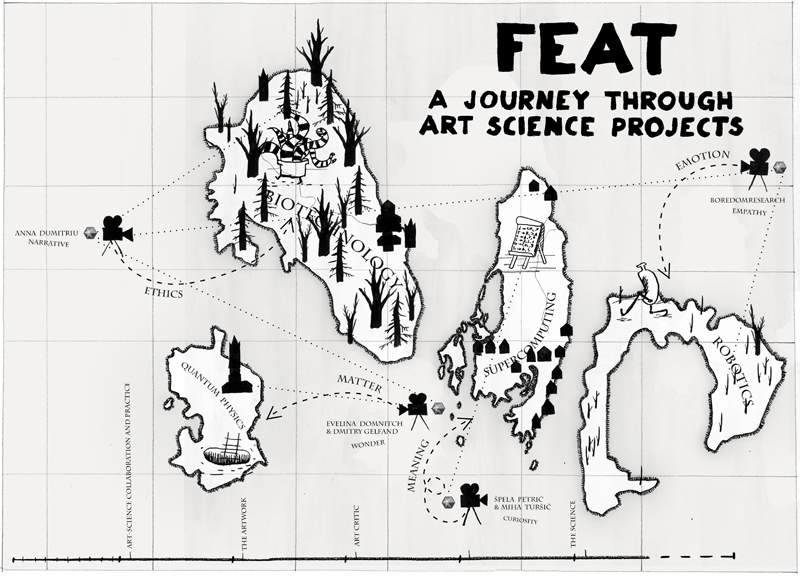
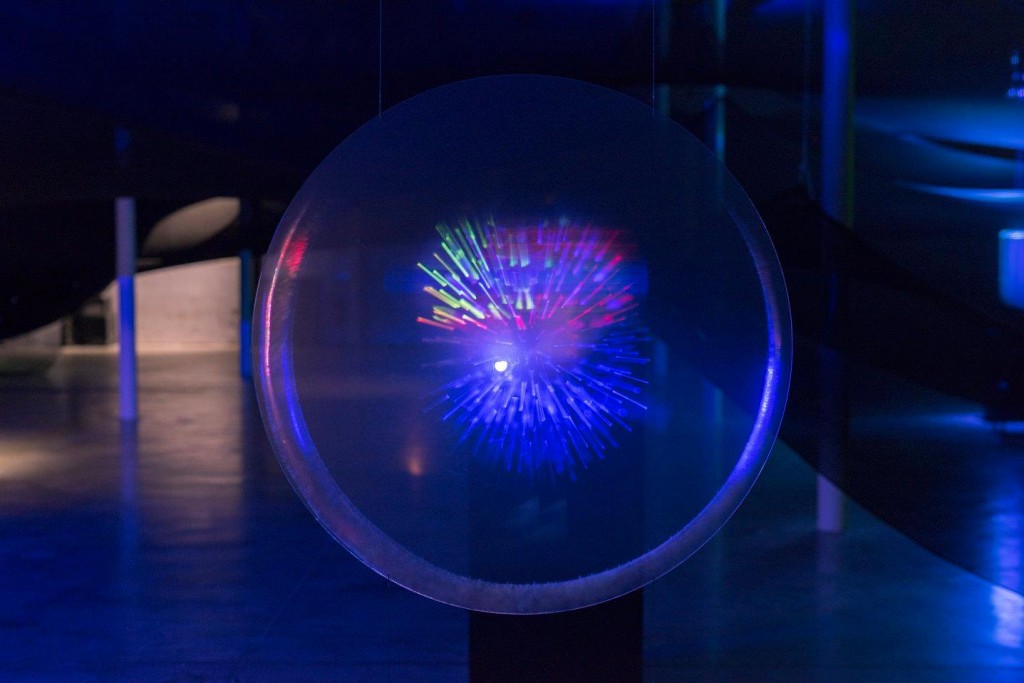
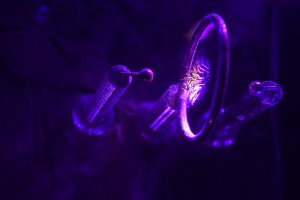
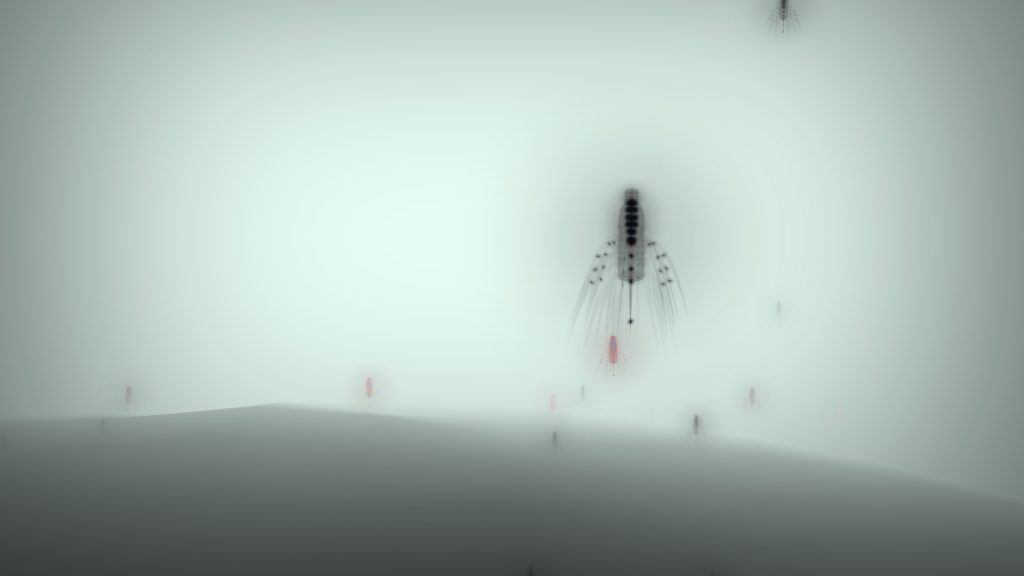
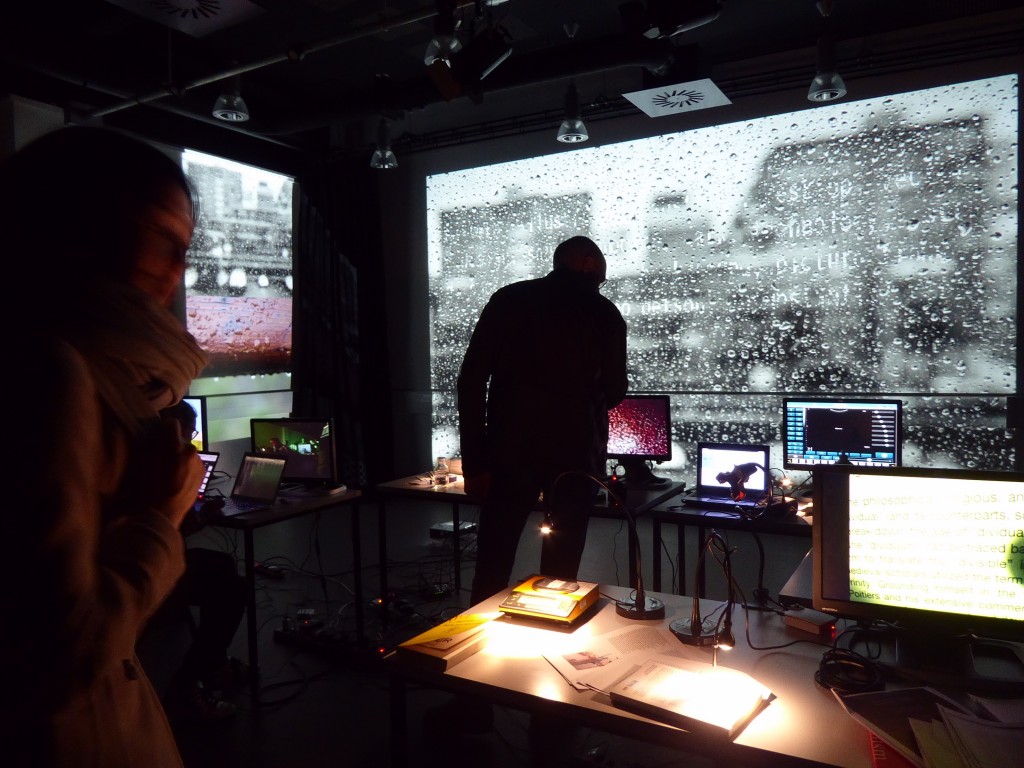
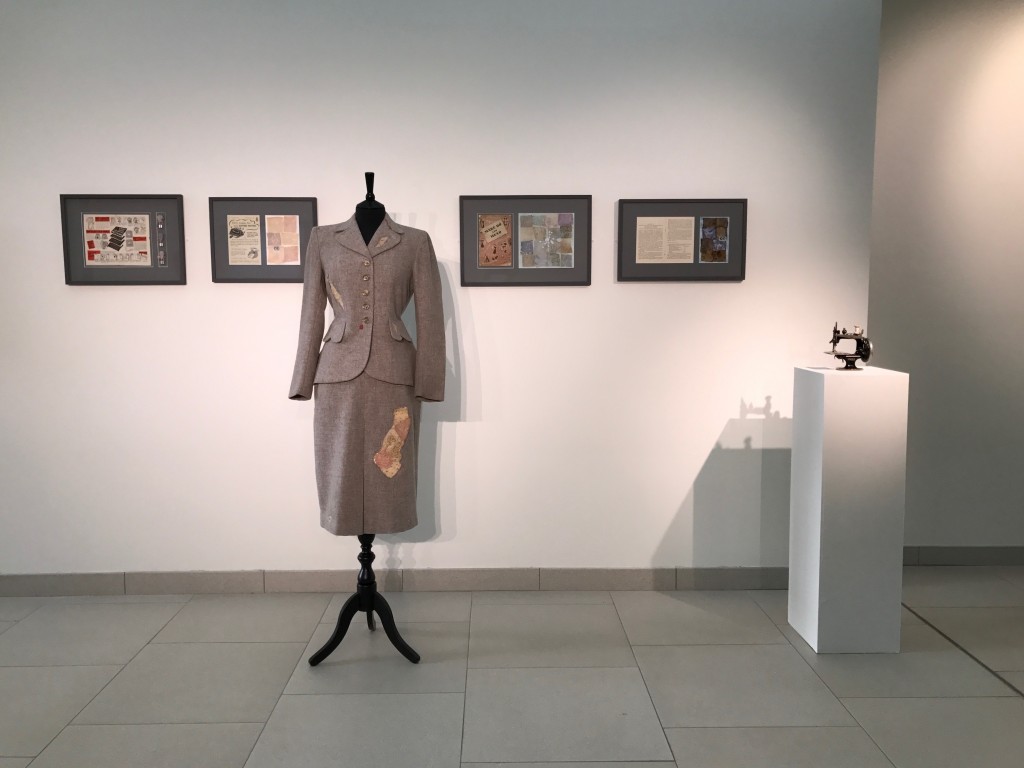
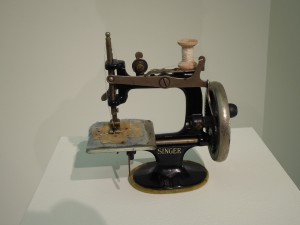
 Follow
Follow